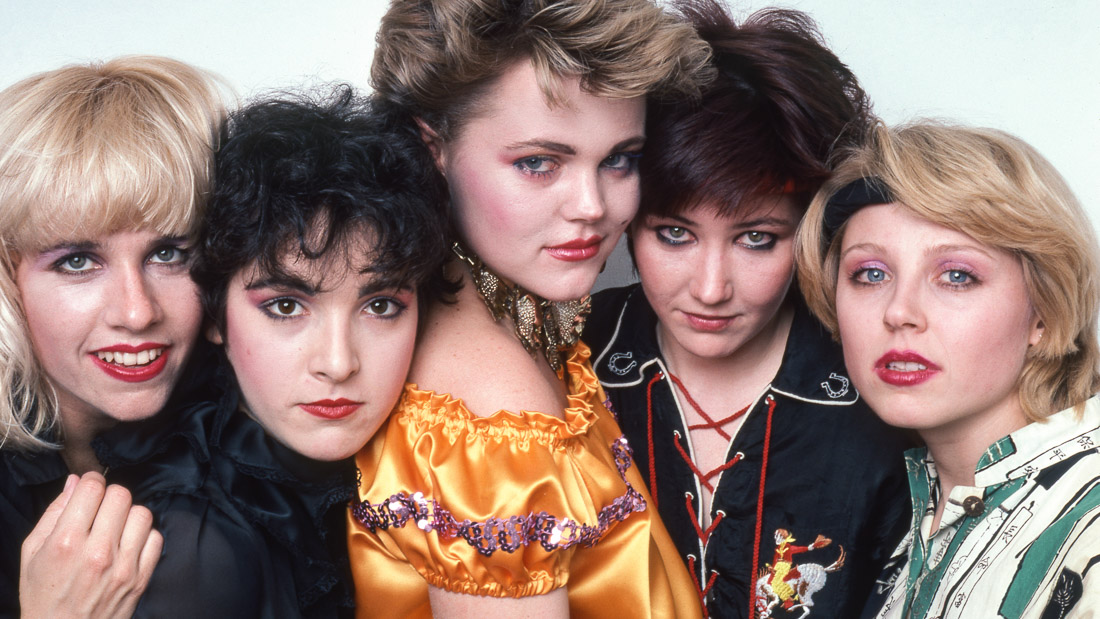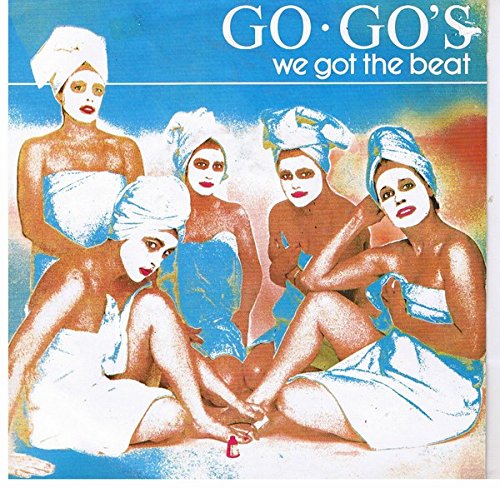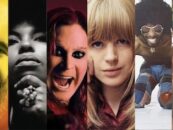
A still from The Go-Go’s by Alison Ellwood (Photo: Lynn Goldsmith; used with permission)
A 2020 documentary, simply called The Go-Go’s, explores the rise and subsequent fall of the all-girl band that formed in Los Angeles as the punk rock revolution was hitting America. And through their surprising (and literal) rise to the top of the U.S. charts, their subsequent fall came hard and fast, largely due to significant drug use by one member and in-fighting largely due to the wide disparity in their paychecks.
Alison Ellwood, an accomplished filmmaker—who has previously directed the 2013 History of the Eagles documentary and, more recently, the terrific Laurel Canyon doc which premiered on Epix also in 2020—does a great job with the Go-Go’s rollercoaster ride. The film had its television premiere on Showtime and is now available on DVD and Blu-ray. (It had its world premiere at the 2020 Sundance Film Festival.)
Related: The Go-Go’s were inducted into the Rock and Roll Hall of Fame’s Class of 2021
Through some crowd-sourced performance footage and early interviews we see the members at their rawest—musically, as well as in their tattered clothes. “People used to cross the street when they saw me,” one of them says. They were fascinated with the punk movement that had arrived from the U.K., with several members taking the drive up the highway to San Francisco to see a disappointing performance by the headline-grabbing Sex Pistols in 1978.
When the Go-Go’s’ earliest lineup made its stage debut at The Masque in LA, their raw-sounding repertoire was so limited that their three-song set included one tune that was played twice. “It was a big, fat mess,” says lead vocalist Belinda Carlisle. “We knew we had something special but we needed [help].”
Two replacements arrived: lead guitarist / keyboardist Charlotte Caffey, who would become one of their two most prominent songwriters, followed by drummer Gina Schock. “I was determined to whip them into shape,” she says. “Gina made us work hard,” says Caffey.
 Soon, Caffey delivered a new song. “I thought the girls were gonna throw me out of the band… it was a pop song,” she says of the ultra-catchy “We Got the Beat.” “Fortunately, they loved it and it changed the trajectory of the band.” Other than Caffey, who was five years older, all of the members were in their early twenties.
Soon, Caffey delivered a new song. “I thought the girls were gonna throw me out of the band… it was a pop song,” she says of the ultra-catchy “We Got the Beat.” “Fortunately, they loved it and it changed the trajectory of the band.” Other than Caffey, who was five years older, all of the members were in their early twenties.
After a U.K. tour, in which they opened for British ska bands, Madness and the Specials, the Go-Go’s returned home, with one final change to their lineup. Kathy Valentine, a guitarist, with no experience on bass, took a crash course to not only acclimate herself with the group’s repertoire but to also learn the new instrument… all while on a three-day coke binge.
Their performances were noticeably more polished and their stature grew, prompting a headline in the Los Angeles Times, “Why Can’t Go-Go’s Get Record Deal?”
In an interview for the film, their original manager, Ginger Canzoneri, who had sacrificed her own savings to get them that U.K. tour, shares stories of the repeated rejections she received from the record labels. [In September ’81, she told me: “The one constant rejection line that we got was: ‘They’re an all-girl band. Girl bands don’t make it.’”] Finally, the LA-based indie label, I.R.S. Records gave them a shot and brought in producer Richard Gottehrer, who got the band to slow the songs down in the studio.
All the while, Caffey had a secret life going on. “A full blown heroin addiction,” she admits. “We were sharing a room and I never saw it,” says rhythm guitarist Jane Wiedlin.
Their debut album, Beauty and the Beat, was released in July 1981. On June 15, “Our Lips Are Sealed,” written by Wiedlin [with many of its lyrics by the Specials’ Terry Hall], was the first single sent to radio. The song finally charted two months later and made slow, but steady, progress.
As the single peaked at #20 that fall, so did the album. That all changed with the follow-up single, “We Got the Beat.” Caffey’s song was an immediate success, reaching #2 on the pop chart. As original veejay, Martha Quinn, says, “MTV and the Go-Go’s were a match made in heaven.” On April 3, 1982, Beauty and the Beat, incredibly, hit #1, remaining as the best-selling album in the U.S. for six weeks. [Seven months’ earlier, when I asked Valentine if she’d like to see the album go Platinum, she told me, “Oh, yeah! We’d like to be one of the major American groups.”]
The story, of course, doesn’t end there, and heartache and disappoint abounds. Soon after the band took off, Canzoneri was canned when larger management firms approached the group to represent them. One member had a significant, previously undisclosed, health issue. Caffey’s issues with drug use came to a head. When one member saw another’s paycheck, the disparity shocked her. As the group’s primary songwriters, Caffey and Wiedlin were earning significant coin for their copyrights.
The film closes with the following: “In 1982, the Go-Go’s made history, becoming the first all-female band who wrote their own songs and played their own instruments to reach number one in the Billboard album chart.
“No other band has matched that achievement.”
Though their chart success is fairly slight—just four of their songs reached the top 30 of the U.S. pop chart and their subsequent album releases peaked at #8 and #18—the group’s impact was far more profound. The positive reception to this documentary undoubtedly helped them earn their first nomination – and selection – into the Rock Hall.
Watch the documentary trailer
The Go-Go’s are celebrating with a brief reunion tour. Tickets are available here. (Hopefully, there will be more dates added.)
They recorded a new song, “Club Zero,” for the film, their first new recording in nearly 20 years.
- It’s a Wonderful Life: An Appreciation - 12/27/2025
- Let’s Dance: 12 Disco Songs By Classic Rock Stars - 12/21/2025
- 10 (More) Big Rock Acts Without a Top 10 U.S. Single - 12/19/2025






3 Comments so far
Jump into a conversationIn 1963 the Singing Nun made history, becoming the first female who wrote her own songs and played her own instrument to reach number one in the Billboard album chart. She’ll also never be in the Rock Hall of Fame.
Yeah, I kinda don’t see that happening.
Maybe as a rebuttal to Madonna.